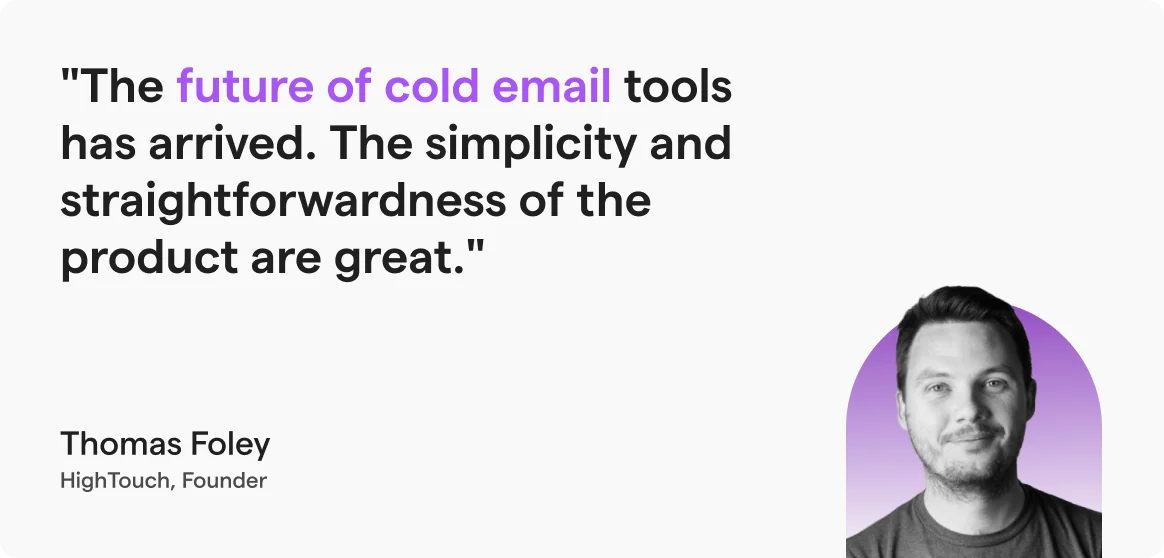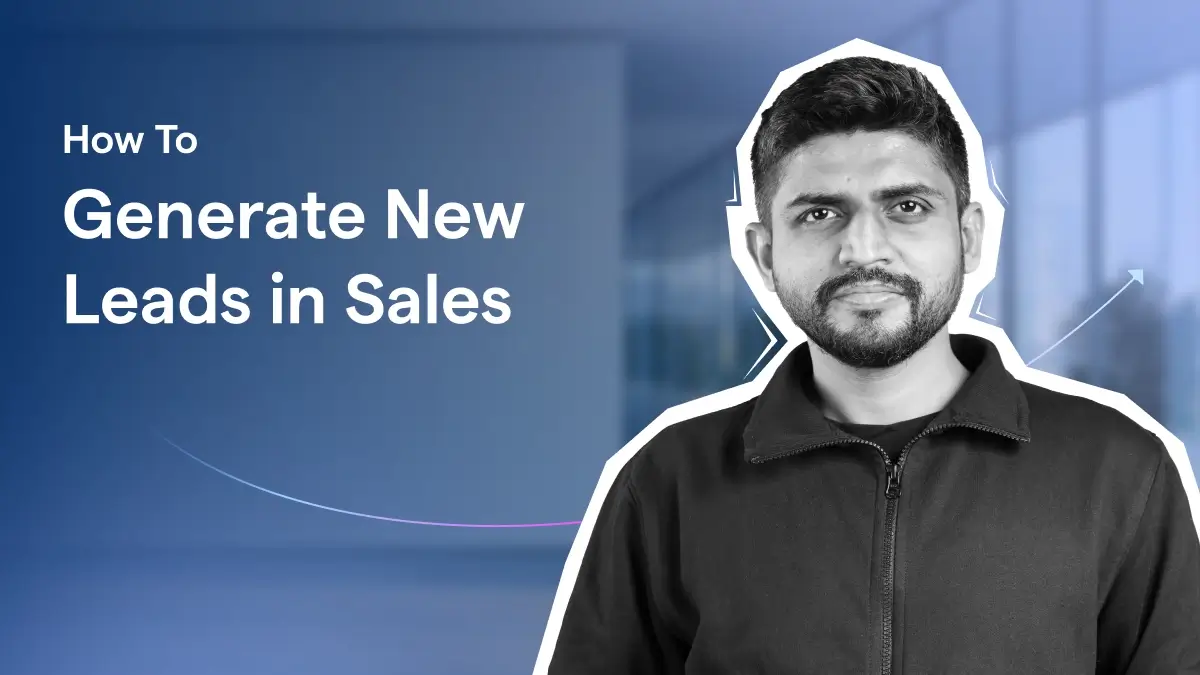Contents
- 1 Generate New Leads in Sales – TOC
- 2 TL;DR on the Best Ways to Generate New Leads in Sales
- 3 Top 15 Strategies on How to Generate More Sales Leads in 2025
- 3.1 1. Cold Emailing (The Best Strategy)
- 3.2 2. Cold Calling
- 3.3 3. LinkedIn Outreach
- 3.4 4. Running Paid Advertising Campaigns
- 3.5 5. Asking Contacts for Referrals
- 3.6 6. Hosting or Appearing on Podcasts
- 3.7 7. Content Marketing to Engage Prospects
- 3.8 8. Video Marketing
- 3.9 9. Social Selling on LinkedIn
- 3.10 10. Referral or Co-marketing Partnerships
- 3.11 11. Optimizing Your Website to Capture Leads
- 3.12 12. Account-Based Marketing
- 3.13 13. Attending Networking Events to Build Connections
- 3.14 14. Engaging in Slack or Discord Communities
- 3.15 15. Offering Free Trials or Product Demos
- 4 Use the Right Mix of Strategies to Drive Leads for Your Business
- 5 FAQs About Generating New Leads in Sales
Sales leads are what keep businesses keep moving ahead.
But getting the right leads that actually convert and match your ideal customer profile is not easy. Many sales reps, BDRs, and SDRs struggle with this every day.
Some people reach their targets, but most do not. You might be wondering why.
The reason is simple. It is about taking the right approach, using the right channels, and knowing what works for your audience. (This is where most people fail.)
Knowing your business from a holistic point of view helps you decide which channels and methods to apply.
In this blog, I will explain 15 practical strategies to generate new leads in sales. These strategies include different channels, methods, and steps (everything you need) to get leads.
By applying these practices, you can find leads that convert and turn them into customers.
Generate New Leads in Sales – TOC
TL;DR on the Best Ways to Generate New Leads in Sales
Do you want a quick glimpse of the top ways to generate new leads in sales? Read these 3 points.
- Cold Emailing: One of the most reliable ways to reach B2B prospects. You control who you contact, when, and what you say.
- LinkedIn Outreach: It is another useful channel to connect with decision-makers. You get full info on their role, interests, and activity to send a personalized message.
- Account-Based Marketing: This works best when you want to close high-value deals. You target specific companies with customized campaigns.
Top 15 Strategies on How to Generate More Sales Leads in 2025
There are tons of strategies that you can follow to generate leads for sales. But not all provide the expected results. This is why I have selected the channels offering the most ROI to help you generate leads.
- Cold Emailing (The Best Strategy)
- Cold Calling
- LinkedIn Outreach
- Running Paid Advertising Campaigns
- Asking Contacts for Referrals
- Hosting or Appearing on Podcasts
- Content Marketing to Engage Prospects
- Video Marketing
- Social Selling on LinkedIn
- Referral or Co-marketing Partnerships
- Optimizing Your Website to Capture Leads
- Account-Based Marketing
- Attending Networking Events to Build Connections
- Engaging in Slack or Discord Communities
- Offering Free Trials or Product Demos
1. Cold Emailing (The Best Strategy)
Cold emailing remains one of the most useful channels to generate new sales leads.
It lets you connect directly with decision-makers, offer value, and start building connections at scale.
Unlike paid ads or social outreach, you get full control over targeting, messaging, timing, and follow-ups.
Why cold email works:
Cold email can generate an average ROI of 4,200 percent, which means every dollar you spend can return forty-two dollars.
What you need for a successful cold email campaign:
- The right ICPs for your product or service
- An irresistible offer that gets attention
- A cold email platform to automate and manage sequences
The key to successful cold emailing lies in relevance and timing. Research your prospects, personalize your message, and write emails that provide value.
To get replies from your prospects, you need to set up strategic follow-up. Why?
Most campaigns fail because of a lack of personalization, poor follow-ups, or weak deliverability infrastructure. Each of these things when done manually then it takes time and management becomes hard.
This is where you need cold email software like Saleshandy.
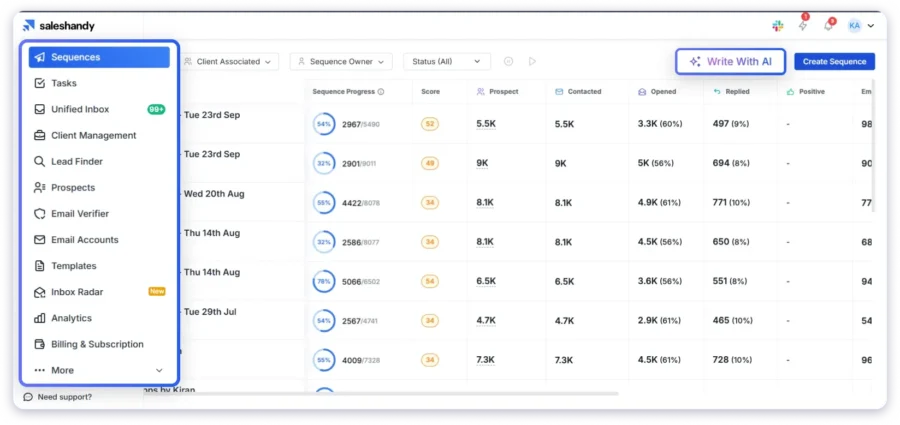
How Saleshandy helps:
Using Saleshandy helps you reach the right prospects at the right time, improve response rates, and save time while running campaigns.
What makes it different:
- AI-powered personalization that creates customized variations for thousands of prospects
- Built-in email warm-up to protect your sender reputation
- Multi-channel sequences that combine email and LinkedIn in one workflow
- Advanced email deliverability tools like verification, spam checking, and inbox monitoring
- Smart automation with follow-ups triggered by prospect behavior
Pro Tip: Always start by sending around 20 to 30 emails first. Once you see a response rate above 5%, gradually scale up to 500 or more each week.
2. Cold Calling
Cold calling remains a helpful way to generate sales leads, even in 2025.
It allows you to talk with decision-makers, qualify prospects, and understand their challenges.
But, it comes with challenges like:
- Finding accurate contact information
- Reaching prospects at the right time
- Keeping conversations engaging and relevant
So, how to do cold calling in the modern environment of sales?
Let me share the steps that our team follows to crack deals worth thousands of dollars.
Here is the complete process of cold calling.
- First, you can take help from platforms like Saleshandy Lead Finder, Apollo, or ZoomInfo to get the right phone numbers.
- Afterwards, for each potential prospect, you can check LinkedIn, company news, and recent activities to build context.
- Next, you can call when prospects are available, like mid-week mornings or early afternoons. These timings work best.
- During a cold call, you should mention something specific about the prospect or company to capture attention.
- Show respect by asking, “Is this a good time for a short conversation?”
- During conversation, you need to explain how you have helped similar companies solve relevant problems.
- Ask questions, note the situation, and adjust your approach based on responses.
- Be prepared to answer questions and address concerns with confidence.
- Once your cold call is at a positive note, you can ask for a follow-up call, demo, or meeting before ending the conversation.
- When you want to send follow-up, send a summary and any resources within 24 hours to reinforce the conversation.
- At last, to leverage cold calling, you can even take multi-channel outreach by combining calls, email, and LinkedIn messages to close deals.
3. LinkedIn Outreach
Almost every business has a LinkedIn account. With over 1.15 billion monthly active users globally, LinkedIn has become a lucrative platform to find your prospects.
It lets you see a person’s role, company, interests, posts, and connections. This way, you get a 360-degree view of your prospects.
As a result, you can make your LinkedIn outreach targeted and personalized.
There are four ways to send a message on LinkedIn to your prospects:
- LinkedIn Connection Request
- Direct Message
- LinkedIn InMail
- Message Request
Pro tip: If you want to connect with prospects outside LinkedIn, Saleshandy’s Chrome extension helps you find their profiles and send connection requests easily, saving time and improving results.
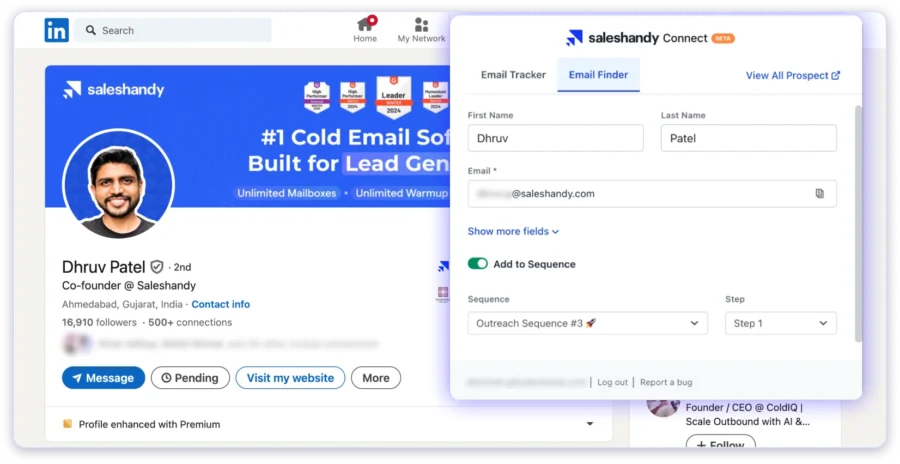
Now, while sending or approaching your prospects, you must follow these tips.
- Make sure your profile shows your expertise and value.
- Identify the prospects who will benefit most from your product or service.
- Send personalized messages by mentioning something specific about them or their company.
- Engage with your prospects’ content by liking, commenting, or sharing the posts.
- Give value first by sharing insights, tips, or helpful information before pitching.
- You can even use LinkedIn Sales Navigator to find the right prospects for your business.
- Try different messages to see what works best and build a list of them.
4. Running Paid Advertising Campaigns
When you want quick leads, paid ads can be useful. However, it only provides you with the results you expect if you set the advertising campaign right.
The results of your paid ad campaigns are important for choosing the right platform, and you know how to reach your prospects.
Let us understand each type of ad platform.
1. Google Search Ads
These ads appear on Google when someone types a search query.
For example, if a business searches for “CRM for real estate agencies,” your ad can appear at the top. This helps you reach people who are actively looking for a solution, so they are more likely to buy.
2. Facebook and Instagram Ads
These ads show up in people’s feeds based on their interests, age, location, or behavior. They are usually cheaper than Google Ads. FB or Insta ads work well to introduce your product, build awareness, or remind people who have visited your site.
3. LinkedIn Ads
LinkedIn lets you target ads by job title, company size, or industry.
It costs more per click ($8–15 on average), but it is useful for reaching decision-makers in B2B businesses.
The leads are often higher quality because you are connecting with the right professionals.
5. Asking Contacts for Referrals
About 27 percent of sales representatives say they get more than half of their new clients through referrals.
These statistics show how important referrals are. You can follow this tactic for your product/services.
For example, ask at peak satisfaction moments. In situations like, after a successful project, when customers give positive feedback, or after they achieve measurable results. Do not ask too early.
Be specific when asking questions. Ask something like, “Do you know any CMOs at Series A startups struggling with email deliverability?”
You can even provide pre-written messages or referral links to your clients, so they can easily share with others.
Give people an apparent reason to refer. For example, offer account credits, cash rewards, discounts, or a public thank-you to encourage referrals.
A well-run referral program can generate 20 to 30 percent of monthly leads.
6. Hosting or Appearing on Podcasts
Podcasts are a powerful way to reach your audience while they listen, commute, or work.
- Starting your own podcast is a great way to build authority (but it requires consistency). Expect around 20–30 episodes before seeing meaningful leads (so stay patient).
- When appearing as a guest, find shows your target audience listens to (this matters). Share real insights and stories that show your expertise (avoid sales pitches) and give listeners clear next steps to connect or learn more (this is how leads start).
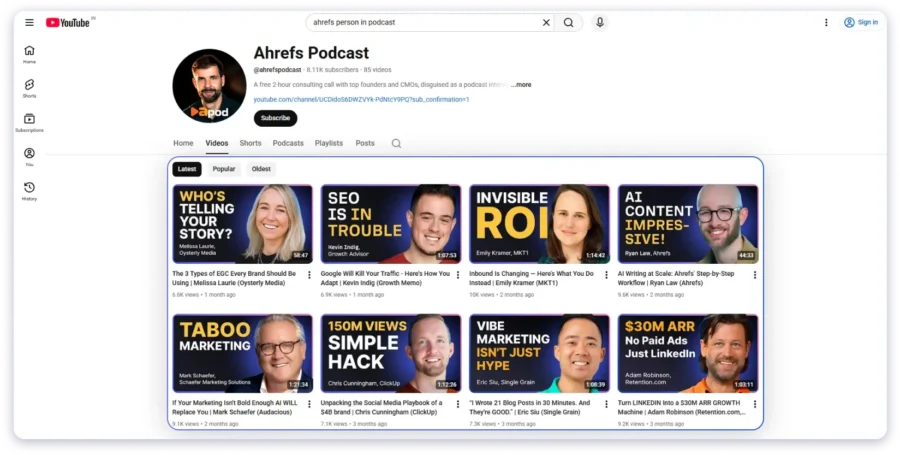
Lastly, you need to create a custom landing page for the podcast listener with a special offer. This one strategic appearance can generate 20-50 qualified leads.
7. Content Marketing to Engage Prospects
Content is king in digital marketing because, without it, you can’t execute any of your campaigns.
With content marketing, you build awareness and shape your brand in the digital world. It acts as a channel to reach your audience, share insights, and engage potential customers.
So, how do you get leads by leveraging content marketing? There are multiple ways of distributing content to get leads. Let’s understand each here.
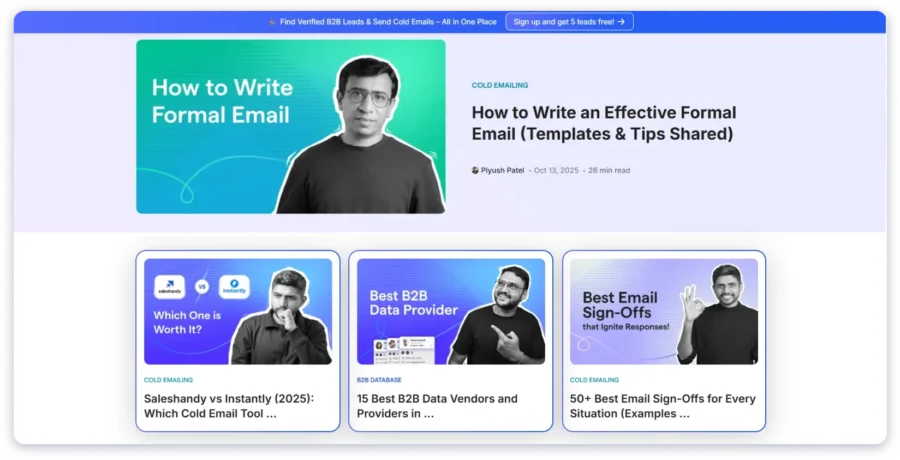
- Blog Posts: Write articles that address the challenges or questions your audience has. Make them educational or informative and provide helpful insights instead of selling a product.
- Whitepapers and Ebooks: Create detailed guides or reports that explain a topic. Use them to give knowledge and help people make informed decisions, often in exchange for an email.
- Case Studies: Show how your product or service solved a problem for someone. Include examples and results to build credibility.
- Guides and Templates: Provide step-by-step instructions or ready-to-use tools. Make them practical and actionable so people can get immediate help.
- Videos: Share short clips that explain a concept, demonstrate your product, or give tips. Use videos for people who prefer watching instead of reading.
Over time, content helps people remember your brand. When you create helpful and engaging content, your audience thinks of your brand first when they face a problem in your area.
A good example is SEMrush and its virtual Easter egg hunt. Instead of a regular blog post or press release, they created an interactive activity. Users completed tasks to find “Easter eggs,” which introduced new features on the platform.
This type of content leaves a strong impression. People remember the experience, explore the platform, try the features, and often sign up for a subscription.
By creating useful content that people enjoy and interact with, you make your brand easy to recall. When your audience faces a challenge, they go straight to your website for a solution. Over time, this builds trust and leads to more conversions.
8. Video Marketing
According to Wyzowl’s 2024 research, 89 percent of people say watching a video convinced them to make a purchase. Video helps build trust faster than text.
So, what types of video can help you generate leads, or how can you build your brand?
- Product demos: Show how your product or service works. Such tutorial videos help prospects who are close to making a buying decision.
- Tutorial videos: Teach functional skills while showing your expertise. This helps build trust and credibility.
- Customer testimonials: Share feedback from your customers to provide social proof. Video testimonials are especially helpful because they feel authentic.
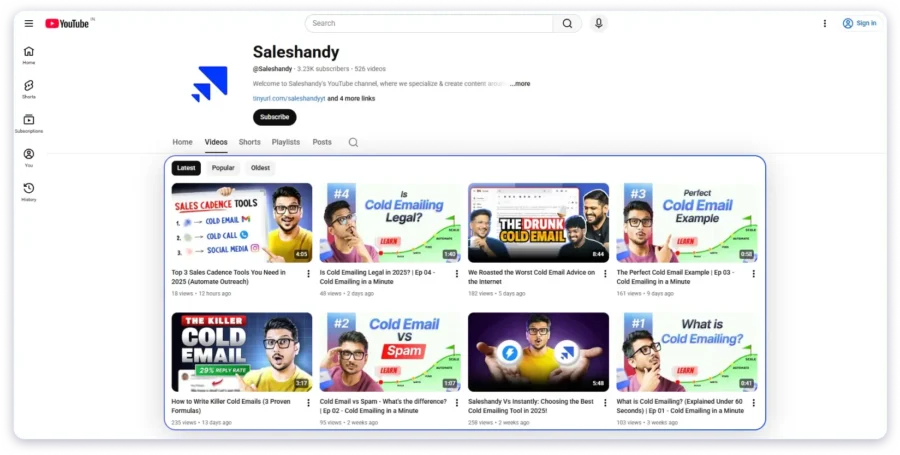
Using Video to Turn Attention into Leads
Video is one of the easiest ways to grab attention and guide people toward becoming leads. Videos are not just for brand awareness. When done right, they can bring real leads.
- YouTube: Post videos where people search for answers. YouTube is where your prospects type in their problems and look for solutions. Use simple language in titles and descriptions so your videos appear at the right moment.
- LinkedIn: Share short clips from your main videos. They grab attention faster than text posts. Keep them under two minutes for better engagement.
- Landing Pages: Add a video at the top of your page. A short demo or walkthrough can answer questions, build trust, and guide visitors to take action without scrolling or guessing.
9. Social Selling on LinkedIn
LinkedIn is where business connections grow, only if you know how to leverage that advantage.
Yes, posting on LinkedIn is important to build your awareness. However, converting your presence is a different story from getting leads and converting them.
However, consistent presence makes people notice and remember you. There are two things you need to do for LinkedIn social selling.
You need to build your presence. Make your headline simple. Say exactly who you help and how.
You can create and post content that solves a problem by sharing tips or solutions. Or you can even talk about trends or challenges in your industry and share helpful advice.
When your content helps people, prospects start coming to you. They see your posts, check your profile, and reach out when they need help.
The key difference between social selling and spam is simple: give value first before asking for anything.
Social selling takes time. Expect 3 to 6 months of consistent effort before seeing results. Once it works, it becomes a source of warm leads who are already interested in your offerings.
10. Referral or Co-marketing Partnerships
You reach audiences you might never reach alone when you start partnering with other companies. This actually gives you access to people who already trust your partner company. That trust makes conversations easy.
- Referral partnerships: Referral partners recommend each other’s services and split a percentage when referrals convert. It is a mutual benefit.
- Co-marketing initiatives: Create joint content such as webinars, ebooks, or research reports. You combine expertise and split the leads generated. Both audiences receive better content than either of you could create alone.
- Integration partnerships: Integrate your product with other related software or products tools. Then cross-promote to each other’s user bases. Your customers receive more value. So do their customers.
11. Optimizing Your Website to Capture Leads
Your website is the first point of contact for visitors. Most times, your first visitor won’t convert, your site needs to guide them and help them to take action one after another.
- Visitors should understand who you help and what you offer within seconds.
- Place calls-to-action across your pages, including the homepage, blogs, and service sections. Be specific: “Get a Free Audit” or “Book a Quick Demo.”
- You should keep only a few fields in your sign-up forms. Even removing one field can make a difference.
- Let visitors ask questions while collecting their details. Tools like Intercom or Drift make this easy.
- Display logos, testimonials, or quick results from clients. This builds trust faster than any headline.
A website that is easy to understand, builds confidence, and guides visitors to the next step turns them into leads.
12. Account-Based Marketing
Account-Based Marketing is about quality over quantity. Instead of reaching out to everyone, target specific companies that matter most to your business.
Each account becomes its own market, and every message, call, or email is tailored to their needs (yes, it takes more effort, but it pays off).
I have used ABM to close deals that brought in more revenue than 200 smaller accounts combined. It’s resource-intensive.
Here are the steps that you need to follow.
- Identify Target Accounts: List 20-50 companies that perfectly fit your ICP. These are accounts where one deal significantly impacts your annual revenue. If an account won’t move your numbers, skip it.
- Research About Your Potential Prospects: Identify your potential decision-maker who can buy your product or service. Who controls the budget? Who influences decisions? Map the relationships between them.
- Create Personalized Content: Generic content doesn’t work in ABM. Build custom landing pages mentioning their company, case studies from their industry, and ROI calculators based on their business model.
- Multi-Channel Outreach: Reach stakeholders through email, LinkedIn, phone, and direct mail. Coordinate timing so multiple decision-makers hear from you simultaneously. This creates internal conversations about your solution.
13. Attending Networking Events to Build Connections
Meeting people in-person often creates better connections than online messages. A short chat or handshake builds trust faster than emails.
How to Get the Most Out of the Events
- Prepare before the event: Identify attendees who match your ICP and research their companies.
- Schedule short one-on-one meetings if possible to maximize impact.
- Listen carefully and understand their challenges before sharing insights. Offer tips or guidance rather than pitching immediately.
Types of Events to Attend for Leads
- Industry conferences and trade shows
- Business meetups
- Networking breakfasts or luncheons
- Workshops and seminars
- Local startup or entrepreneur events
- Professional association events
Attending these events consistently allows you to build meaningful relationships, generate qualified leads, and make your brand memorable.
A few examples of the events are CES (tech), Web Summit (tech/startups), SaaStr Annual (SaaS), WordCamp (digital marketing), Inbound by HubSpot (marketing), Content Marketing World (marketing), Dreamforce by Salesforce (sales/CRM), SXSW (creative/media/tech), Mobile World Congress (mobile/tech), TechCrunch Disrupt (startups).
Over time, prospects will trust you and consider your product or service when they need a solution. Or even you send them a follow-up message that connects with them, and the conversations get going to make a deal.
14. Engaging in Slack or Discord Communities
Almost every person spends their time on online communities like Reddit, Slack, or Discord. These channels have people who discuss life, problems, ideas, solutions, and almost everything that exists on earth. Right? Most people ask questions, share problems, and look for recommendations.
Platforms like Slack and Discord give you direct access to people who are already engaged. These are not cold prospects. People are looking for answers and solutions.
There are two ways to approach and use the communities.
- Finding communities: Look for communities where your ICP is active. For example: SaaS founders in SaaStr, marketers in marketing Slack groups, or developers in tech Discord servers.
- Building presence: Do not pitch your product. Most communities do not allow that. Instead, help people. Answer questions, share resources, and give advice without promoting yourself.
I have spent months just helping in communities before anyone asked what I do.
That is when leads come naturally. When people see you know your stuff, they reach out to you. Take part in AMAs, host workshops, or teach what you know.
15. Offering Free Trials or Product Demos
Allowing prospects to try your product or see a demo helps them understand its value. They can experience how it solves their problems before making a decision.
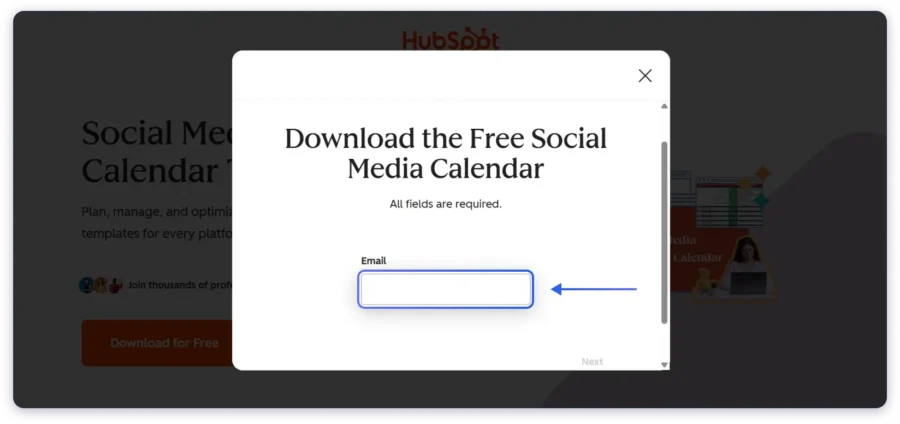
Keep trials or demos simple and easy to access. Provide guidance or short walkthroughs so users know what to do. Answer questions during the demo to remove doubts and build confidence.
A good trial or demo can turn interested prospects into paying customers faster because they see the benefits for themselves.
Use the Right Mix of Strategies to Drive Leads for Your Business
These are the 15 ways to generate new leads in sales. I am sure that using a proper combination of these strategies, you can generate leads for sales.
If you are not sure which strategies to apply, I would recommend you get started with cold emailing + LinkedIn.
As you know, cold email has a good ROI, and you can take maximum advantage of it. The only thing you need to take care of is using the right process and software.
For that, Saleshandy becomes the right choice. Take a free trial, and you will know why I suggested it.
FAQs About Generating New Leads in Sales
1. How do you use ChatGPT to generate leads in sales?
ChatGPT helps me in research and content creation. It does not involve direct lead generation. I use it to write email drafts, create message variations, and research prospect companies. You still need proper tools like Saleshandy to send campaigns and track results.
2. What is the importance of ICP in generating leads?
Every single thing depends on your ICP. The channels to utilize, what messages to send, and how to stop wasting money on the leads that aren’t good are dependent on ICP. When you have a clear ICP, your conversion rates can increase three to five times.
3. How long does it take to generate leads for sales?
Paid ads and cold emailing generate leads within days. Content marketing and social selling take 3-6 months.

